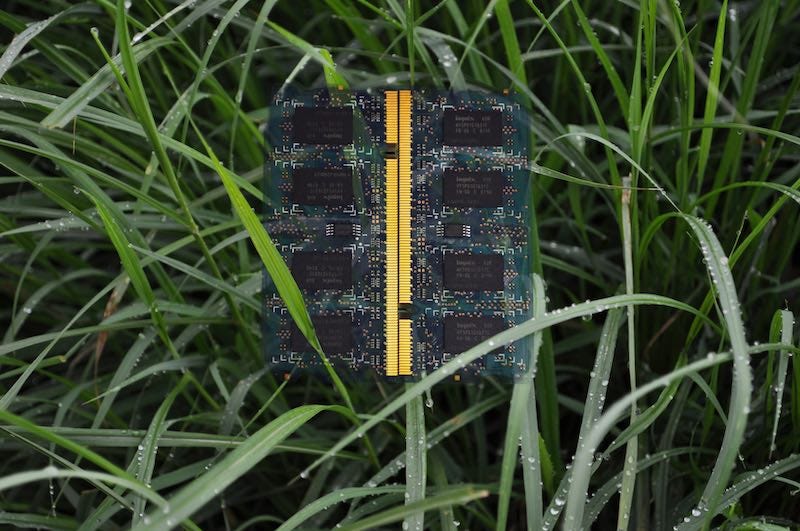By Anastasia Montgomery

Today, technology is so important to our existence that it is as if our smartphones were a unique organ. However, the metaphor breaks down once you look at how much e-waste (the informal name for any discarded electronic or electrical devices or their parts) we produce while compulsively upgrading the technologies we acquire. It is estimated that 50 million tons of e-waste are produced each year, and according to the Environmental Protection Agency, only 15–20% of e-waste is recycled, while the remaining electronics end up in landfills and incinerators.
The solution to this arms race of replacing old technology? Obviously, newer technologies. One proposed by a team of UW-Madison researchers, lead by Yei Hwan Jung, is biodegradable circuit boards. The team published “Highperformance green flexible electronics based on biodegradable cellulose nanofibril paper” in the journal Nature, where the team highlights the detrimental effects of gallium arsenide, a non-biodegradable and toxic substance used for semiconductors, which are found in cell phones and tablets, and introduce their theory to reduce the need for these detrimental substances. The proposed solution: to reduce use for semiconductors. By creating fully formed electronic devices on a sacrificial material in a dense array format, a microscale device can be released and printed on practically any substrate. Enter biodegradable solutions: silk, paper, and synthetic polymers have been researched by others as potential substrates, however, this team specifically focused on cellulose nanofibril (CNF), a nano-structured cellulose produced by bacteria.
The results of their research were positive, for they effectively established CNF as a feasible biodegradable semiconductor substrate in both digital and microwave electronics. Combining the technologies available into a large circuit with CNF substrates would help reduce the consumption of non-renewable natural resources and lessen the accumulation of e-waste.
“The proposed solution to reduce use for gallium arsenide semiconductors: creating fully formed electronic devices on an organic substrate”
Another application for the biodegradable circuit technologies is in the medical field. Ewaste is also a concern in this environment, as medical equipment must be frequently updated, and medical treatment can be a resource intensive process. In order to address these issues, University of Illinois researchers, John Rogers and his team of researchers successfully created microchips that dissolved in mice after a few days. Implications of such a biodegradable circuit board would include monitoring bacterial growth after a surgery, or by delivering medicine from inside the body, then allowing the device to naturally dissolve without need for excess procedures and without any excess waste.
Already, the CNF technology created by the UW-Madison researchers appears to be working at the capacity applicable to our current technological uses. In combination with biomedical applications, the market for organic technology will surely continue to grow, and ewaste will soon be as outdated as the Motorola Razr.
